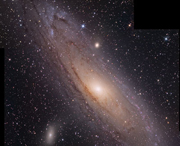 Professor LEE Myung Gyoon of SNU's Department of Physics & Astronomy, this May's"Scientist of the Month" chosen by the Ministry of Education, Science and Technology (MEST), the National Research Foundation of Korea (NRF), and Seoul Economy Newspaper, mentioned that"this achievement will provoke further research internationally" and that he would do his best to upgrade the level of astronomy research in Korea to the world standard in his acceptance speech.
Professor LEE Myung Gyoon of SNU's Department of Physics & Astronomy, this May's"Scientist of the Month" chosen by the Ministry of Education, Science and Technology (MEST), the National Research Foundation of Korea (NRF), and Seoul Economy Newspaper, mentioned that"this achievement will provoke further research internationally" and that he would do his best to upgrade the level of astronomy research in Korea to the world standard in his acceptance speech.Globular clusters are found mostly in galaxies. About 160 globular clusters have been found to exist in our galaxy. Up to now, scientists have assumed that the clusters are forming a gigantic frame in the center of galaxies. The recent research of Professor Lee, however, has identified that the clusters revolve around heavy galaxies or that they move from one galaxy to another.
 The research team took the Virgo cluster of galaxies, the nearest one from the earth, as their ob
The research team took the Virgo cluster of galaxies, the nearest one from the earth, as their obWritten by LEE Tae Joon, SNU English Editor,
Proofread by Brett Johnson, SNU English Editor, morningcalm2@gmail.com

